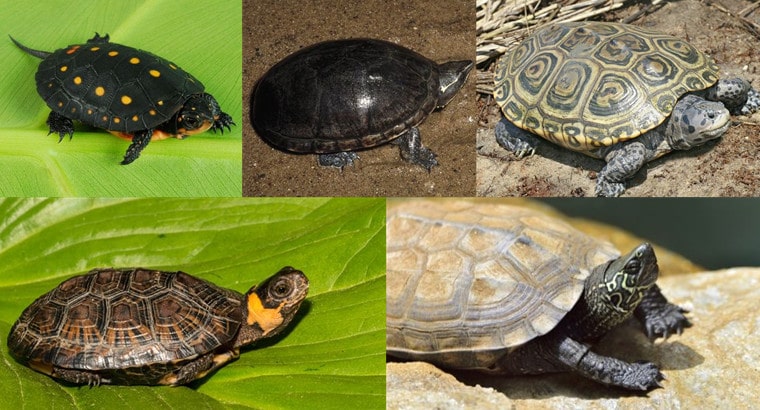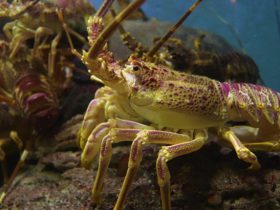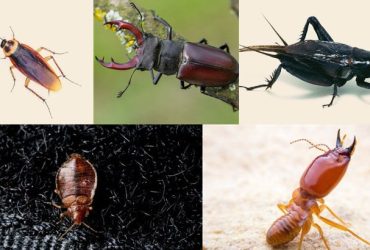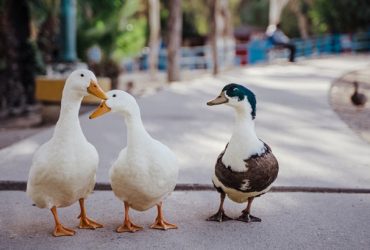Turtles make for wholesome pets, anybody who has owned one, be it big or small. They spend their whole lives eating, resting, and swimming around in their tank. Turtles can also be surprisingly playful and have a very soothing presence. They are very easy to care for, and they also live for much longer than your average pet.
Although they’re not that active, turtles do need a relatively large space compared to their size so that they can freely explore at their own pace. If you’re short on room, here are some breed suggestions for turtles that stay small and look cute forever.
Benefits Of Turtles That Stay Small

1. Affordability
Small turtles used to cost a dime. While that time has passed, small turtles are still relatively inexpensive compared to large turtles. Small turtles are less expensive to purchase and care for because you won’t need to invest in a giant aquarium or expansive filtration system.
Small turtles only require the most basic setup — a tank that gives them room to swim around, filters, turtle grub, and the occasional replacement bulb. All of this can fit comfortably within the average spending budget of a college student, let alone an adult.
2. Less Work Overall
Small turtles are easier to clean or groom. It is also easy to clean their tanks as small turtles produce less waste. They’re easy to take to the vet for checkups and can accompany you on roads as well. The cherry on the cake? They only need to be fed every alternative day.
3. Easy To Feed
Most reptiles and amphibians are notorious for giving pet owners a headache when it comes to feeding. They’re irregular, demanding at times, and have mood swings. Their food can also be tricky to acquire at times.
Turtles, on the other hand, are much easier to feed. Most of them are vegetarians and can easily sustain themselves on fruits, leafy green vegetables, and a pet store turtle feed containing essential nutrients. You could also incorporate turtle food pellets or feeder fish if needed.
Lists Of Turtles That Stay Small
#1. Mississippi Mud Turtle (4 inches)
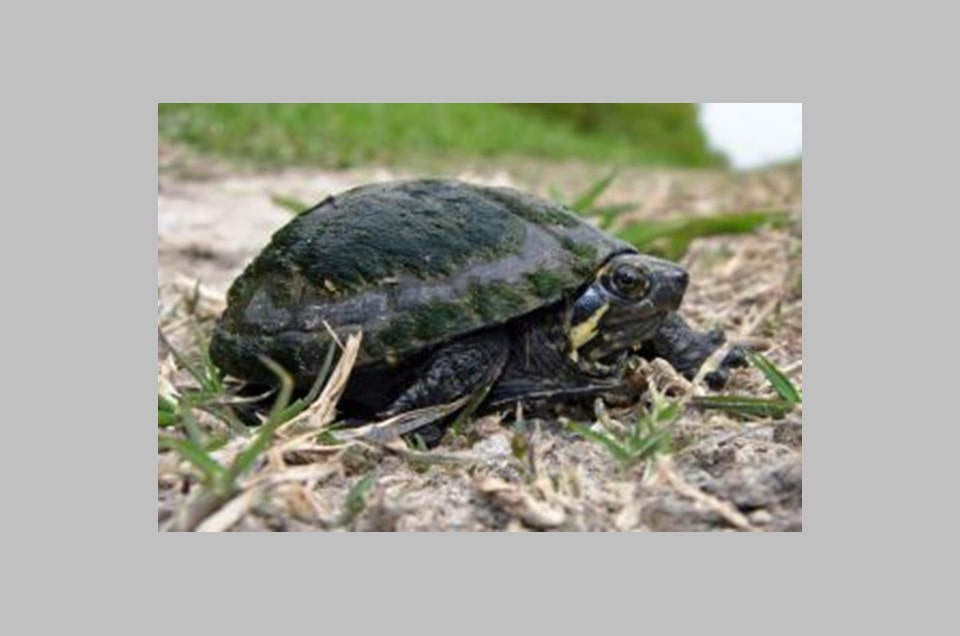
Image source: Pinterest
Size and Appearance
Mississippi mud turtles only grow up to 4 inches as an adult. They’re small, dark brown, and semi-aquatic freshwater species so you would need to purchase a mini-aquarium for them. They’re endemic to the United States and are commonly found inhabiting marshlands, swamps, slow-moving rivers, and ponds.
Care and Environment
Given the proper care, these adorable critters can live for up to 50 years. Fortunately, all they need to subsist is a small tank with enough room for swimming. Turtles are usually lazy but they still need to exercise every now and then. An aquarium with room to swim can help stimulate them.
Diet
Mud turtles are omnivorous, so they can eat snails, fishes, insects, and other types of protein, as well as leafy vegetables like parsley and lettuce. The foods they eat are usually low in calcium so you will need to dust a calcium mineral supplement on their food once a week.
#2. Bog Turtle (3–4 inches)

Image source: Pinterest
Size And Appearance
Bog turtles grow up to be 3-4 inches in height and are North America’s smallest turtle. They’re a critically endangered species of semi-aquatic turtles so it may be difficult to acquire one today. They are recognizable by the unique orange patch on either side of their head and by their mud-brown shells.
Bog turtles are most commonly found in mountain bogs, wetlands, and deep mucky soils.
Care
To mimic its natural environment, you should provide bog turtles with a muddy aquarium to help them stay cool and adapt faster since they’re wild animals. They’re incredibly smart pets that know when to come out and ask for food. However, they’re also very territorial.
So if you’re considering purchasing two males, it’s best to keep them apart. Otherwise, they may end up fighting over territory.
Diet
Bog turtles are omnivorous and can enjoy feasting upon many things. They can eat slugs, mice, millipedes, voles, and even nestling birds. You can feed them commercial turtle food pellets and the occasional house pest like cockroaches or crickets for some protein. They also enjoy seeds and berries.
#3. Common Musk Turtle (2–4.5 inches)
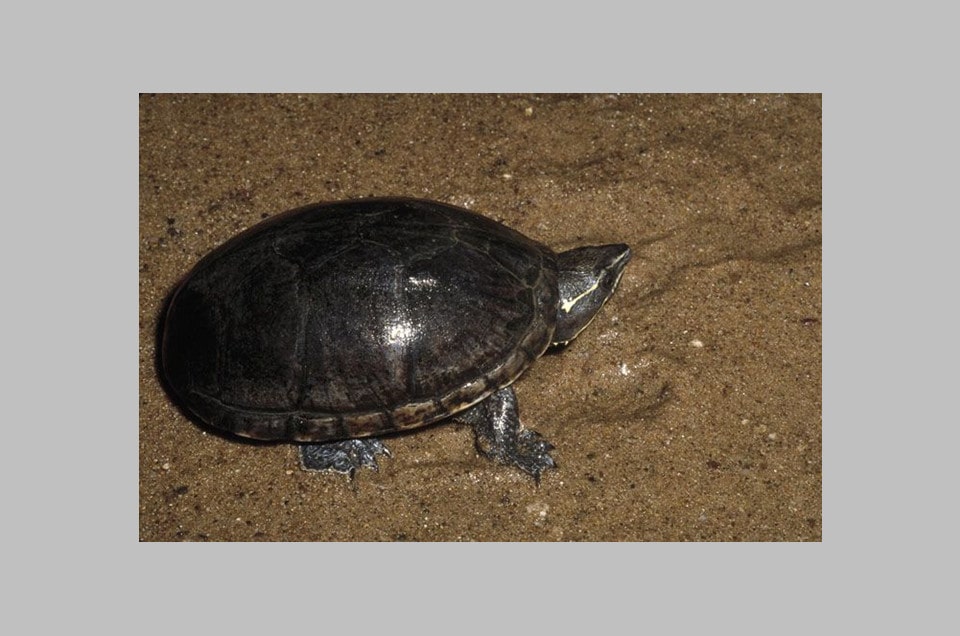
Image source: Pinterest
Size and Appearance
Common musk turtles grow between 2 and 4.5 inches in length. Their physiology and color are quite similar to those of mud turtles, so it can be difficult to tell them apart.
However, one distinguishing feature the musk turtle carries is the ridge on the back of their shells that starts around the middle. Mud turtles, on the other hand, have a smoother, flatter shell.
Care
A 20-gallon aquarium would be more than enough for your musk turtle to live like a king. However, since they’re freshwater turtles, you need to install a filtration system or add a canister filter. You will also need heating and a UVB light, which will help in their healthy growth as your turtle’s living indoors.
Diet
Wild musk turtles eat an array of insects like worms, aquatic nymphs, or dragonflies, but a good commercial turtle food can also provide most of the important nutrients. They can subsist on turtle food for a long time, but to provide more stimulation, you should mix things up once in a while with shrimp, worms, or common insects.
#4. Michigan Spotted Turtle (3–4 inches)

Image source: Pinterest
Size and Appearance
Michigan spotted turtles grow up to 3 inches in length. They’re semi-aquatic and are found in marshy meadows, bogs, swamps, ponds, and all small bodies of water. They can be identified easily by the yellow spots on their shells.
Care
Although they’re not aquatic, spotted turtles do enjoy swimming. So you should consider purchasing a 55-gallon tank. You need to have a balance of land and water in the tank. You will also need to invest in a filtration system to keep the water crystal clear and add heating lights to promote healthy growth.
Diet
Spotted turtles are omnivorous. They can live on commercial food although you should supplement it once in a while with insects or leafy vegetables. They will also require a weekly calcium supplement since their diets don’t give them enough calcium.
#5. Reeve’s Turtle (6 Inches)

Image source: Pinterest
Size and Appearance
Reeve’s turtles originate from East Asia and can grow up to 6 inches in size. They don’t have many signature traits so they’re hard to identify. Their upper shell is usually black in color with shades of brown, olive green, and a moderate amount of yellow.
Care
With the right care, Reeve’s turtles can live for up to 25 years in captivity. They’re not adept swimmers, so a single baby reeve’s turtle won’t need more than 15 gallons of swimming space in shallow waters.
One important thing the habitat must-have is a basking area, which you’ll have to provide by investing in heating lights since you’re raising them indoors.
Diet
Reeve’s turtles in the wild feed on both animal and plant matter. They eat fish, worms, insects, and green leafy vegetables with equal enthusiasm.
#6. Diamondback Terrapins (5–9 inches)
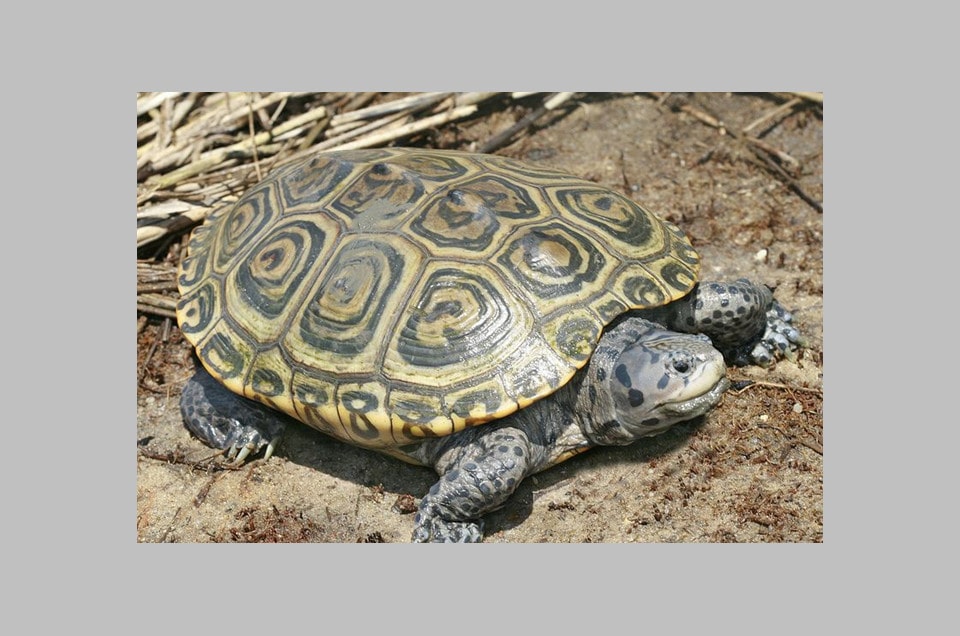
Image source: Pinterest
Size and Appearance
Diamondback Terrapins are the largest turtles on this list since they can grow up to 9 inches in size. They have a very unique trichromatic pattern of beige, brown, and black streaks on their shell. Their skin is also covered in dark uneven spots and streaks.
Care
Knowing how large they can get compared to the other turtles, ideally, you should go for a 70-gallon tank with a powerful filtration system. Diamondback Terrapins are fun to have as pets but require extra care because they’re more prone to shell diseases and fungal problems.
Make sure you invest in quality filters and UV lights to help their bodies produce enough Vitamin D3 to help fight off those diseases.
Diet
Diamondback Terrapins are poor hunters, so it’s best not to feed them live foods they’d have to chase. Like the other turtles, they too can subsist on commercial pet food along with the occasional protein snack like snails or worms. They’re almost strictly carnivorous so they may not respond to vegetables.


